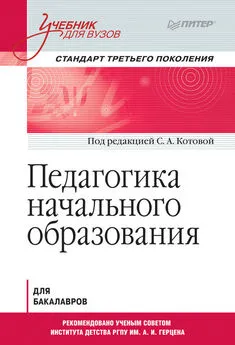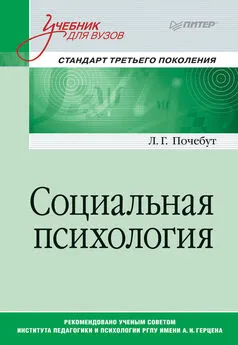Леонид Бурлачук - Психодиагностика: учебник для вузов
- Название:Психодиагностика: учебник для вузов
- Автор:
- Жанр:
- Издательство:Питер Пресс
- Год:2008
- Город:С-Петербург
- ISBN:978-5-91180-841-9
- Рейтинг:
- Избранное:Добавить в избранное
-
Отзывы:
-
Ваша оценка:
Леонид Бурлачук - Психодиагностика: учебник для вузов краткое содержание
Второе издание учебника (первое вышло в 2002 г.) переработано и дополнено. В книге детально рассмотрены история, предмет и методы этой важнейшей отрасли психологического знания. Доступно изложены вопросы, связанные с математико-статистическим обоснованием измерения индивидуальных различий и конструирования психологических тестов. Особое внимание уделено теоретическим и практическим проблемам измерения (тестирования) интеллекта и личностных особенностей. Учебник предназначен для студентов высших учебных заведений, обучающихся по специальности «Психология», аспирантов, а также специалистов, решающих диагностические задачи в своей повседневной деятельности.
Психодиагностика: учебник для вузов - читать онлайн бесплатно ознакомительный отрывок
Интервал:
Закладка:
Matarazzo, J. D. (1992). Biological and physiological correlates of intelligence. Intelligence, 257-8.
Matarazzo, J. D. (1992). Psychological testing and assessment in the 21st century. American Psychologist, 47, 1007–1018.
McCall, R. B. (1993). Environment effects on intelligence: The forgotten realm of discontinuous nonshared within-family effects. Child Development, 54, 408-15.
McCartney, K., Harris, M. J., amp; Bernieri, F. (1990). Growing up and growing apart:
A development meta-analysis of twin studies. Psycholgical Bulletin, 107, 226-37.
McClelland, D. С (1951). Personality. NY: Sloane.
McClelland, D. C. (1971). Assessing human motivation. New York: General Learning Press.
McGue, M. (1989). Nature-nurture and intelligence. Nature, 340, 507-8.
McKelvie, S.J. (1992). Does memory contaminate test-retest reliability? Journal ofGenetic Psychology, 119, № 1, 59–72.
McPherson F. M., Presly A. S., Armstrong J., Curtis R. H. (1974). Psychoticism» and psychotic illness. Brit. J. Psychiat., 125, № 8, 152–160.
McReynolds, P. (Ed.), (1974). Advances in psychological assessment (Vol. 2). Palo Alto, CA: Science and Behavior Books, Inc.
McReynolds, P. (Ed.), (1981). Advances in psychological assessment (Vol. 5). San Francisco: Jossey-Bass.
Meehl P. E., Rosen A. (1955). Antecedent probability and the efficiency of psychometric signs, patterns or cutting scores. Psychological Bulletin, 52, № 2, 194–216.
Meehl, P. E. (1954). Clinical versus statistical prediction: A theoretical analysis and a review of the evidence. Minneapolis: University of Minnesota Press.
Meili, R. Podrecznik diagnostyki psychologicznej (1969). PWN: Warszawa.
Melamed, T. (1992). Personality correlates of physical height. Personality and Individual Differences, 13, 1349-50.
Merrell, K. W. (1994). Assessment of behavioral, social, and emotional problems. NY:
Longman.
Messick, S. (1960). Dimensions of social desirability. Journal of Consulting Psychology, 24, 279–287.
Messick, S. (1962). Response style and content measures from personality inventories. Educational and Psychological Measurement, 22, 41–56.
Meyer, R. G. (1993). The clinician's handbook: Integrated diagnostics, assessment and intervention in adult and adolescent psychopathology. Needham Heights, MA: Allyn amp; Bacon.
Millon, Т., amp; Davis, R. D. (1996). Disorders of personality: DSM-IV and beyond. New York: Wiley.
Mischel, W. (1968). Personality and assessment. New York: Wiley.
Mischel, W. (1977). On the future of personality measurement. American Psychologist, 32, 246–254.
Mischel, W. (1981). Introduction to personality (3d edition). New York: Holt, Rinehart amp; Winston.
Misiak, H. amp; V. S. Sexton (1966). History of Psychology. New York: Grune amp; Stratton.
Moreland, K. L. (1987). Computerized psychological assessment: What's available. In J. N. Butcher (Ed.). Computerized psychological assessment (p. 26–49). New York:
Basic Books.
Moreland, K. L. (1991). Assessment of validity in computer-based test interpretations. In Т. В. Gutkin amp; S. L. Wise (Eds.). The computer and the decision-making process (p. 43–74). Hillsdale, NJ: Lawrence Erlbaum.
Murray, H. A. (1938). Explorations in personality. New York: Oxford University Press.
Murstein, B. J. (1963). Theory and research in projective techniques (emphasizing the TAT). New York: John Wiley.
Neale, M. C, amp; Cardon, L. R. (Eds.) (1992). Methodology for genetic studies of twins and families. Dordrecht: Kluwer Academic Publishers.
Newman, H. H., Freeman, F. N, amp; Holzinger, K.J. (1937). Twins: A study of heredity and environment. Chicago: University of Chicago Press.
Newmark, C. S. (Ed.) (1985). Major psychological assessment instruments. Newton, MA:
Allyn amp; Bacon.
Normand, J. (1987). Computerized psychological testing: overview and critique. Professional Psychology: Research and Practice, 18, 42–51.
Nowak, S. (1965). Studia z metodologii nauk spolecznych. PWN: Warszawa.
Nowak, S. (1970). Metodologia badan socjologicznych. PWN: Warszawa.
Nowakowska M. (1976). Psychologia ilosciowa z elementami naukometrii. Warszawa:
Nunnaly J. C. (1978). An overview of psychological measurement. In Clinical Diagnosis of Mental Disorders. A Handbook. New York: Plenum Press.
Nuttall, E. V., Romero, L, amp; Kalesnik,J. (Eds.) (1992). Assessing and screeningpreschoo-lers. Boston, MA: Allyn amp; Bacon.
O'Brien, N. P. (1988). Test construction. New York: Greenwood Press.
Office of Strategic Services Staff. (1948). Assessment of men. New York: Holt, Rinehart amp; Winston.
Oppenheim, A. N. (1992). Questionnaire design, interviewing and attitude measurement. London: Pinter Publishers.
Osgood, C, Suci, G. amp; Tannenbaum, P. (1957). The measurement of meaning. Urbana, IL: University ol Illinois Press.
Osterlind, S.J. (1983). Test item bias. Newbury Park, CA: Sage Publications.
Osterlind, S.J. (1989). Constructing test items. Boston, MA: Kluwer Academic Publishers.
Pascual-Leone, J. (1983). Growing into human maturity: Toward a metasubjective theory of adulthood stages. In P. B. Baltes, O. G. Brim (Eds.). Life-span development and behavior. V. 5. New York: Academic Press.
Pedersen, N. L., Plomin, R., Nesselroade, J. R., amp; McClearn, G E. (1992). A quantitative genetic analysis of cognitive abilities during the second half of the lifespan. Psychological Science, 3, 346-53.
Peterson, J. (1926). Early conceptions and tests of intelligence. Yonkers, NY: World Book Company.
Piaget, J. (1950). The psychology of intelligence. New York: Harcourt, Brace amp; World.
Pletraslnski Z. (1975). Zdolnosci. In Psychologia. Warszawa: PWN, 735–762.
Plewicka Z. (1980). Podstawy diagnozy psychologicznej. In Stosowanapsychologia wy-chowawcza. Warszawa: PWN, 37–46.
Plomin, R. (1990). The role of inheritance in behavior, Science, 245,183-8.
Plomin, R. (1994). Genetics and experience: The interplay between nature and nurture. Thousand Oaks, CA: Sage.
Plomin, R. (1994). The nature of nurture: Family environment. In R. Plomin (Ed.), Genetic and experience: The interplay between nature and nurture (p. 104-48). Beverly Hills: Sage.
Plomin, R., amp; Daniels, D. (1987). Why are children in the same family so different from one another? Behavioral and Brain Sciences, 10, 1 -60.
Plomin, R., amp; Neiderhiser, J. M. (1992). Genetics and experience. Current Directions in Psychological Science, 1, 160-4.
Plomin, R., DeFries, J, C, amp; Fulker, D. W. (1988). Nature and nurture during infancy and early childhood. New York: Cambridge University Press.
Plomin, R., DeFries, J. C, amp; Loehlin, J. С (1977). Genotype-environment interaction and correlation in the analysis of human behavior. Psychological Bulletin, 84, 309-22.
Plomin, R., Emde, R. N., Braungart, J. M., Campos, J., Corley, R., Fulker, D. W., Kagan J., Reznick, J. S., Robinson, J., Zahn-Waxler, C, amp; DeFries, J. С (1993). Genetic change and continuity from fourteen to twenty months: The MacArthur Longitudinal Twin Study. Child Development, 64, 1354-76.
Plomin, R., Loehlin, J. C, amp; DeFries, J. С (1985). Genetic and environmental components of «environmental» influences. Developmental Psychology, 21, 391–402.
Plomin, R., McClearn, G. E., Pedersen, N. L., Nesselroade, J. R., amp; Bergeman, С S. (1989). Genetic influence on childhood lamily environment perceived retrospectively from the last hall ol the lifespan. Developmental Psychology, 24, 738-45.
Plomin, R., McClearn, G. E., Pedersen, N. L., Nesselroade, J. R., amp; Bergeman, С S. (1989). Genetic influences on adults' ratings ol their current environment./owraa/ of Marriage andthe Family, 51, 791–803.
Plomin, R., Reiss, D., Hetherington, E. M., amp; Howe, G W. (1994). Nature and nurture:
Genetic contributions to measures ol the family environment. Developmental Psychology, 30, 32–43.
Positive Psychological Assessment: A Handbook ol Models and Measures (2003). Ed. by S.J. Lopez and С R. Snyder. Washington: АРА.
Prince, R., Guastello, S. (1990). The Barnum effect in computerized Rorschach interpretation system. .Journal of Psychology, 124, № 2, 217–222.
R.J. Sternberg (Ed.) (1986), Advances in the psychology of human intelligence (Vol. 3, p. 335–368). Hillsdale, NJ: Erlbaum.
Rabin, A. I. (1968). Projective techniques in personality assessment: A modern introduction. New York: Springer.
Rabin, A. I. (Ed.) (1981). Assessment with projective techniques. New York: Springer.
Rapaport, C, Gill, M., amp; Schaler, J. (1968). Diagnostic psychological testing (V'ol. 1). (Rev. ed.). Chicago: Year Book Publishers.
Richardson, K. (1991). Understanding intelligence. Philadelphia, PA: Milton Keynes.
Ritzier, B. A., Sharkey, K. J., amp; Chudy, J. (1980). A comprehensive projective alternative to the TAT. Journal of Personality Assessment, 44, 358–362.
Robinson, J. P., Shaver, P. R., amp; Wrightsman, L. S. (1990). Measures of personality and social psychological attitudes. San Diego, CA: Academic Press.
Robinson, J. P., Shaver, P. R., amp; Wrightsman, L. S. (Eds.). (1991). Measures of personality and social psychological attitudes. San Diego: Academic Press.
Rogers, P., amp; Green, M. (1993). Dieting, dietary restraint and cognitive performance. British Journal of Clinical Psychology, 32.
Rorschach, H. (1941). Psychodiagnostics. (Hans Huber Verlag, Transl). Bern: Bircher. (Original work published 1921).
Rose R.J. (1981). [Review of Farber, S. L., «Identical twins reared apart: A reanalysis.»] Science, 215, 959-60.
Rosenzweig S. (1964). Investigating and appraising personality. In T. G Andrews (ed). Methods of Psychology. New York: Wiley, 539–568.
Rowe, D. (1994). The myth of family influences. New York: Guilford.
Rowe, D. С (1981). Environmental and genetic influences on dimensions of perceived parenting: A twin study. Developmental Psychology, 17, 203-8.
Rowe, D. С (1983). A bio metrical analysis of perceptions of family environment: A study of twin and singleton sibling kinships. Child Development, 54, 416-23.
Rowe, D. С. (1994). The limits of family influence: Genes, experience, and behavior. New York: Guilford Press.
Rozensky, R. H., Sweet, J. J., amp; Tovian, S. M. (1997). Psychological assessment in medical settings. New York: Plenun.
Rust, J., Golombok, S. (1989). Modern Psychometrics. The science of psychological assessment. London: Routledge.
Sanocki W. (1978). Kwestionariusze osobowosci w psychologii. Warszawa: PWN.
Sarason, I. G. (Ed.) (1980). Test anxiety. Hillsdale, NJ: Erlbaum.
Sattler, J. M. (1982). Assessment of children's intelligence and special abilities (2nd ed.). Boston: Allyn amp; Bacon.
Sattler, J. M. (1988). Assessment of children (3rd ed.). San Diego, CA: Author.
Scarr, S. (1981). Race, social class and individual differences in IQj. New studies of old issues. Hillsdale, NJ: Eribaum.
Читать дальшеИнтервал:
Закладка:










